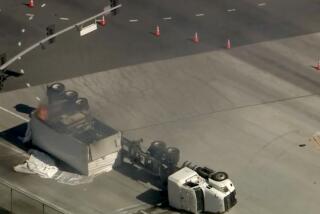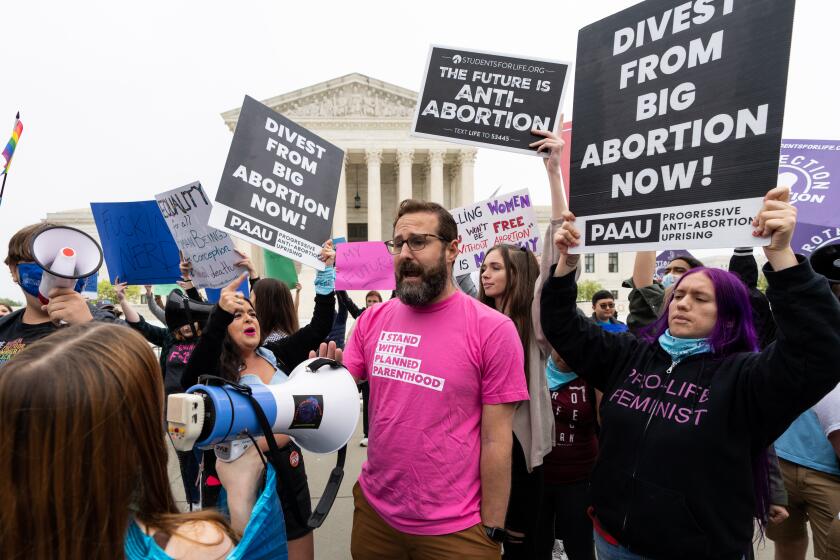Gas Fireball Would Not Reach Land
A catastrophic release of liquefied natural gas from a terminal proposed off the Ventura County coast could spread a powerful and spectacular fireball over several miles, but pose no threat on land because the facility would be at least 14 miles offshore, a new study shows.
The gas-processing plant, one of four proposed for Southern California, would convert fuel shipped from across the Pacific Ocean for use in Los Angeles-area factories and power plants. Such terminals operate around the world with a good safety record, yet the newly released analysis shows that the effect of a worst-case disaster would be significantly greater than identified when the project, called Cabrillo Port, was proposed nearly three years ago.
For the record:
12:00 a.m. April 20, 2006 For The Record
Los Angeles Times Thursday April 20, 2006 Home Edition Main News Part A Page 2 National Desk 1 inches; 62 words Type of Material: Correction
Natural gas terminal: An article in Tuesday’s California section about a proposed liquefied natural gas terminal at least 14 miles off the Ventura County coast said a catastrophic release of fuel from storage tanks would result in a vapor eruption of up to 6.3 miles. That measurement is based on nautical miles. The eruption could extend to a radius of 7.27 miles.
Critics, including local officials and conservationists, said safety and environmental concerns would only prompt more opposition to the project. But BHP Billiton, the Australian energy company proposing it, said the floating facility can be safely managed.
“We take safety very seriously,” said company spokeswoman Kathi Hann. “It’s one of the reasons we decided to put Cabrillo Port as far offshore as it is.”
A sudden release of up to 200,000 cubic meters of fuel from two of three tanks of liquefied natural gas at a terminal moored between Malibu and Port Hueneme would result in a fast-moving airborne vapor eruption spanning up to 6.3 miles -- four times farther than originally thought, according to a revised draft environmental impact statement.
The “vapor cloud fire,” which would cease about 5.7 miles from land, could disrupt shipping in the Santa Barbara Channel and affect ships and recreational boaters.
Such an event is considered highly unlikely, yet the potential for terrorist attacks, sabotage, shipping collisions or industrial upsets has led to increased scrutiny of security and safety measures for liquefied natural gas terminals proposed along the California coast.
Since the Cabrillo Port project is in an early stage of development, design and safety features can be included, such as firefighting contingencies and establishing barriers between gas storage tanks and processing equipment.
Those recommendations and other details are contained in the draft impact statement and risk assessment prepared for the U.S. Coast Guard and the California State Lands Commission. Public hearings on the document are scheduled for 6:30 p.m. today at Malibu High School and for 1 and 6:30 p.m. Wednesday at the Oxnard Performing Arts and Convention Center.
The proposed $500-million project consists of three major components: a floating processing terminal the size of three football fields, underwater pipelines to the Reliant Energy Co. power generating station in Oxnard, and additional pipelines near Camarillo and in Santa Clarita. Liquefied natural gas is super-chilled for ocean transport, then reconverted to vapor to heat homes, manufacture products and generate electricity.
Hann said the U.S. Department of Homeland Security also required BHP to prepare a security plan. The company proposes a 1,640-foot security zone around the terminal and two tugboats to patrol surrounding waters.
Opponents said the new study has problems. City councils in Oxnard and Malibu are already on record opposing the project.
Malibu Mayor Andy Stern said he would ask the City Council next month to appropriate at least $50,000 to help pay the legal costs for organizations working to defeat the project.
“The residents of Malibu should not be guinea pigs to some experimental project,” Stern said. “My main priority is to fight this facility.”
Some have said that natural gas is the cleanest fossil fuel available and an important one for industry in smoggy Southern California. Environmentalists near the coast, however, oppose the facility, saying it would emit too much air pollution.
“This is a step in the wrong direction,” said Linda Krop, an attorney for the Santa Barbara-based Environmental Defense Center. “Instead, we should be pursuing clean alternatives, like energy conservation, clean energy and renewable [power].”
Mike Villegas, executive officer for the Ventura County Air Pollution Control District, said the district is working with BHP and the U.S. Environmental Protection Agency to reduce pollution from the Port of Hueneme or from idling ships to offset the emissions from the liquefied natural gas operation.
“With the mitigation [measures] and best available control technology, the air pollution concerns can be addressed,” Villegas said.
Other LNG projects have been proposed in Long Beach and off the coast of Oxnard and Malibu. The California Energy Commission estimates that the state demand for natural gas will steadily grow over the next 10 years, requiring an additional 200 billion cubic feet of the fossil fuel by 2013.
More to Read
Sign up for Essential California
The most important California stories and recommendations in your inbox every morning.
You may occasionally receive promotional content from the Los Angeles Times.










